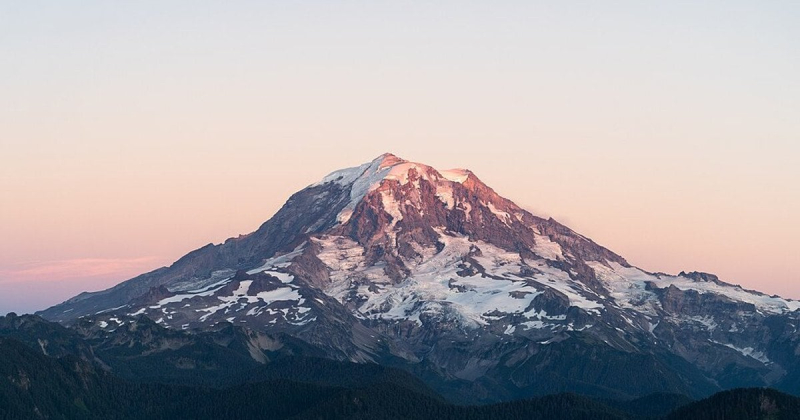Mount Rainier in Washington State is worrying scientists again – more than 100 tremors have been recorded beneath it.

More than 100 small earthquakes were detected beneath Washington state's Mount Rainier on Tuesday, the most seismic activity in the region in 15 years. The volcano is located just 50 miles from Seattle, and thousands of people live on its slopes.
The Daily Mail writes about this.
The U.S. Geological Survey (USGS) said the series of tremors began at 4:29 a.m. on July 9. None of the quakes exceeded magnitude 1.7, but their number and depth (ranging from 1.2 to 3.7 miles below the volcano's summit) have drawn the attention of scientists.
USGS reassures: there is no reason to panic. The current alert level for Mount Rainier remains “normal,” with no ground deformations or abnormal signals recorded. However, this is the largest “swarm” of earthquakes on the volcano since 2009, and the region has seen increased activity since 2020.
Mount Rainier is one of the most dangerous volcanoes in the United States. Although it has not erupted for over a thousand years, its slopes contain huge amounts of snow, ice, and volcanic soil. If it erupts, this could lead to the formation of lahars—powerful mudflows that could literally wipe out entire communities.
Hundreds of thousands of residents of Tacoma, South Seattle and other cities are effectively living on the remains of ancient lahars – in areas that will likely be the first to be affected.
“Mount Rainier is the volcano that keeps me up at night,” volcanologist Jess Phoenix has previously admitted. In her opinion, the greatest threat is not lava flows, but lahars, which can form even without an eruption – due to heavy rains or gradual destabilization of slopes.
Lahars have caused major disasters in the past. In particular, the 1985 eruption of Nevado del Ruiz in Colombia killed 25,000 people and a mudflow inundated the entire town of Armero. In the United States, the 1980 eruption of Mount St. Helens, 50 miles from Rainier, also released salt that destroyed hundreds of homes and claimed dozens of lives.
Volcanologists are currently closely monitoring activity beneath Rainier. They say an eruption is inevitable, but seismic activity is a reminder of potential risks. The region is being monitored for ground movement, temperature, infrasound signals, and slope deformation.
At the same time, experts are calling on residents of nearby areas to be vigilant and know what to do in case of an emergency.
Over the past two decades, Mount Rainier has seen significant improvements to its lahar monitoring system, officially called the Mount Rainier Lahar Detection System. It includes seismometers and other sensors located both on the volcano's flanks and along potential mudflow pathways, particularly in the Puyallup River and Tahoma Creek valleys.
When the system was introduced in 1998, the technical capabilities left much to be desired – due to the limitations of the technology of that time, there was a delay between the appearance of a lahar and its detection by the devices. Modern equipment installed in recent years has made it possible to ensure almost instantaneous detection of the threat and transmission of a signal in real time.
Meanwhile, regional governments are refining their evacuation plans and emergency procedures. On March 21, 2024, more than 45,000 students from the south Seattle suburbs and areas west of Rainier participated in a large-scale lahar evacuation drill. According to the U.S. Geological Survey, it was the largest such exercise in the world.
Such efforts are aimed at increasing the region's preparedness for a possible eruption, a threat that experts believe is quite real in the near future.

